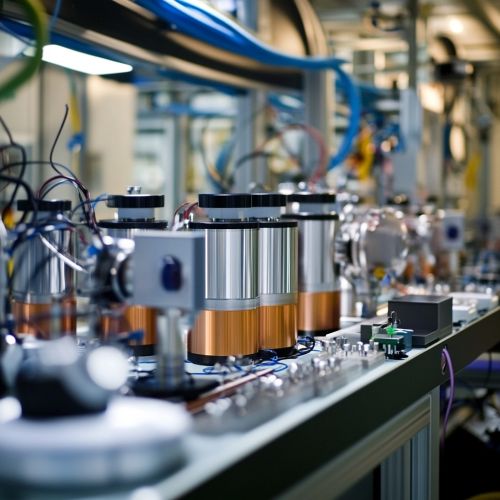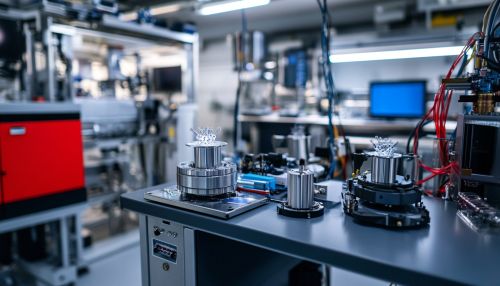Muon-Catalyzed Fusion
Introduction
Muon-catalyzed fusion is a process in which nuclear fusion reactions are facilitated by the presence of muons, which are subatomic particles similar to electrons but with a much greater mass. This phenomenon has been studied extensively as a potential method for achieving controlled nuclear fusion at relatively low temperatures compared to traditional methods. The process involves the replacement of electrons in hydrogen isotopes with muons, leading to the formation of muonic hydrogen atoms that can more easily undergo fusion.
Background
Muon-catalyzed fusion was first proposed by Andrei Sakharov in 1948 and later experimentally confirmed by Luis W. Alvarez in 1956. The basic principle relies on the fact that muons, due to their greater mass, bring the nuclei of hydrogen isotopes closer together, thereby increasing the probability of nuclear fusion. This process primarily involves the isotopes of hydrogen: protium, deuterium, and tritium.
Muons and Their Properties
Muons are elementary particles belonging to the lepton family. They have a mass approximately 207 times that of an electron and a mean lifetime of about 2.2 microseconds. Muons can be generated through high-energy particle collisions, such as those occurring in particle accelerators or cosmic ray interactions.
Mechanism of Muon-Catalyzed Fusion
The mechanism of muon-catalyzed fusion involves several key steps:
1. **Muon Generation**: Muons are produced through high-energy processes and subsequently slowed down to thermal energies. 2. **Muon Capture**: A muon replaces an electron in a hydrogen isotope, forming a muonic atom. 3. **Formation of Muonic Molecules**: The muonic atom can then form a muonic molecule with another hydrogen isotope. 4. **Fusion Reaction**: The close proximity of the nuclei within the muonic molecule increases the likelihood of fusion, resulting in the release of energy and the production of a fusion product, such as helium.
Experimental Observations
Experimental studies of muon-catalyzed fusion have demonstrated the feasibility of the process. Early experiments conducted by Alvarez and his team showed that muons could indeed catalyze fusion reactions at low temperatures. Subsequent research has focused on optimizing the conditions for muon-catalyzed fusion and understanding the underlying physics.
Challenges and Limitations
Despite its potential, muon-catalyzed fusion faces several significant challenges:
1. **Muon Lifetime**: The short lifetime of muons limits the number of fusion reactions they can catalyze before decaying. 2. **Muon Production**: Generating a sufficient number of muons requires high-energy particle accelerators, which are expensive and energy-intensive. 3. **Sticking Problem**: After catalyzing a fusion reaction, a muon may become "stuck" to the fusion product, rendering it unavailable for further catalysis.
Potential Applications
Muon-catalyzed fusion has been explored as a potential energy source due to its ability to facilitate fusion at lower temperatures. However, the practical implementation of this technology for large-scale energy production remains a distant goal due to the aforementioned challenges.
Future Research Directions
Future research in muon-catalyzed fusion aims to address the current limitations and explore new approaches to enhance the efficiency of the process. This includes developing more efficient muon production methods, extending the muon lifetime, and mitigating the sticking problem.
See Also


References
- Sakharov, A. (1948). "Muon-Catalyzed Fusion". Soviet Physics Journal.
- Alvarez, L. W. (1956). "Experimental Confirmation of Muon-Catalyzed Fusion". Physical Review Letters.
- Jones, S. E. (1986). "Muon-Catalyzed Fusion: A Review". Reviews of Modern Physics.
